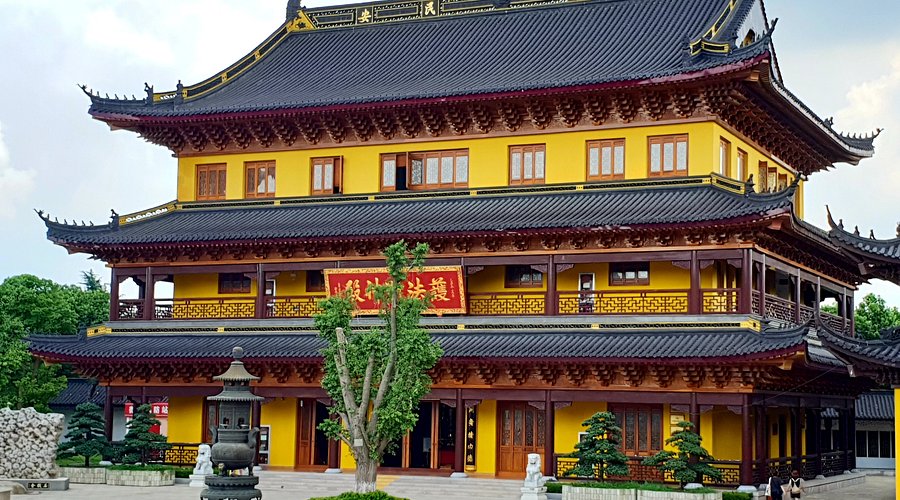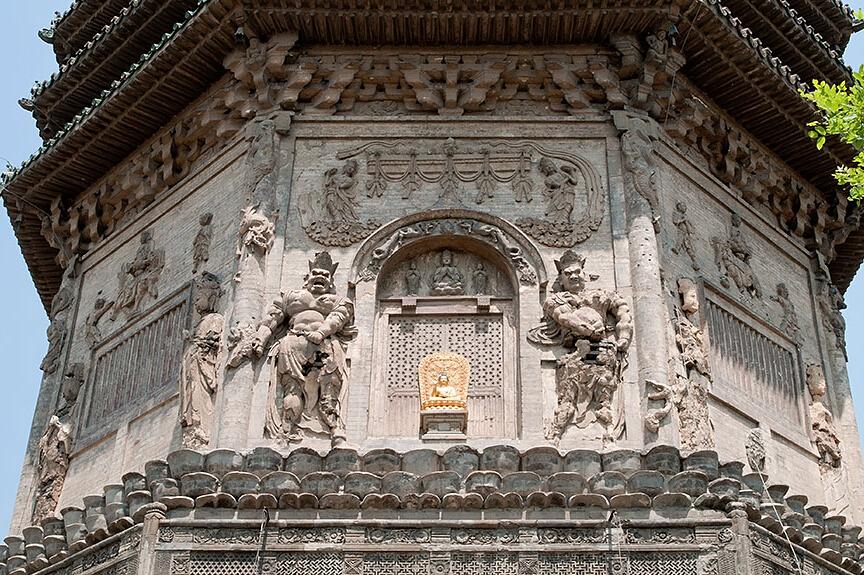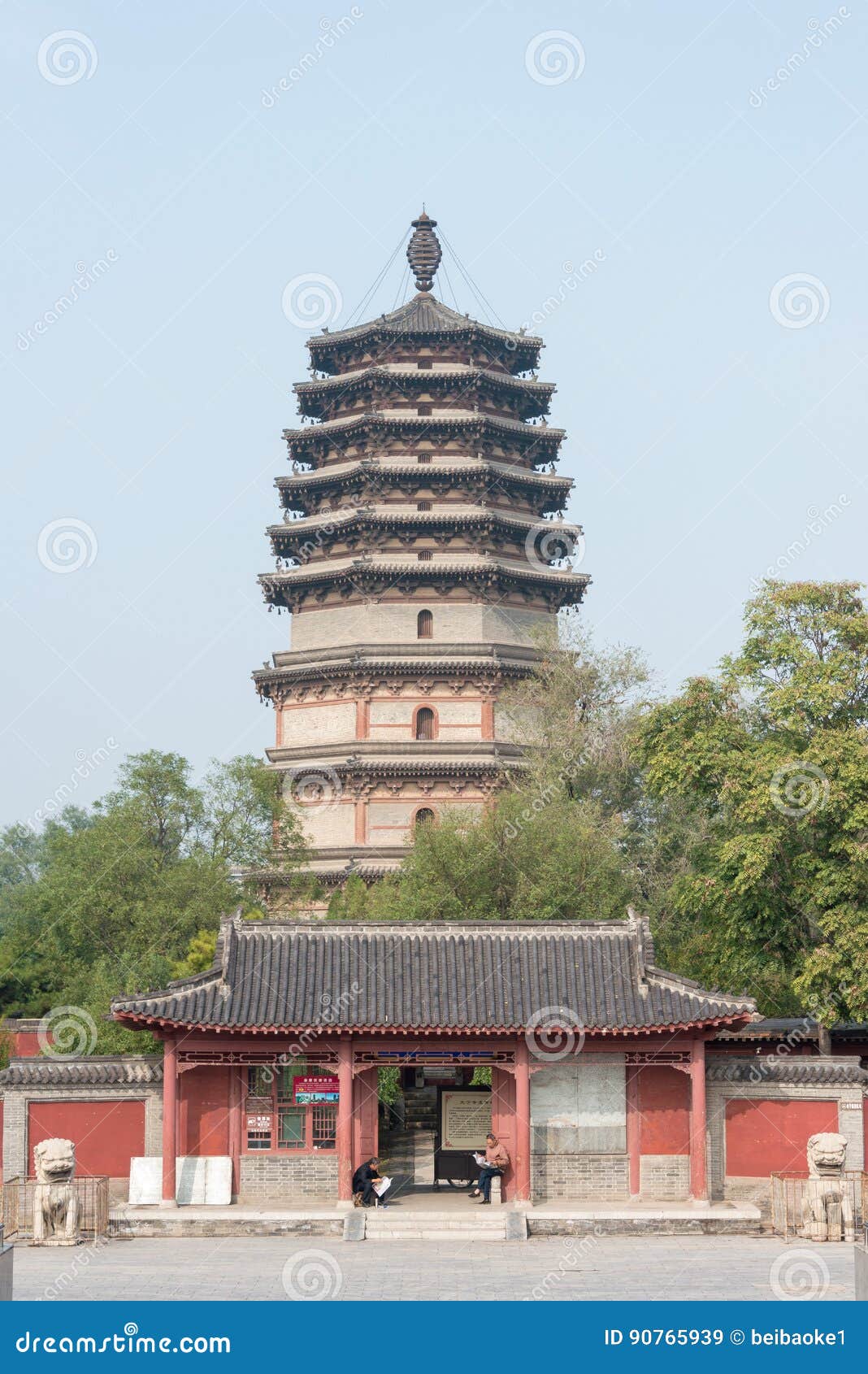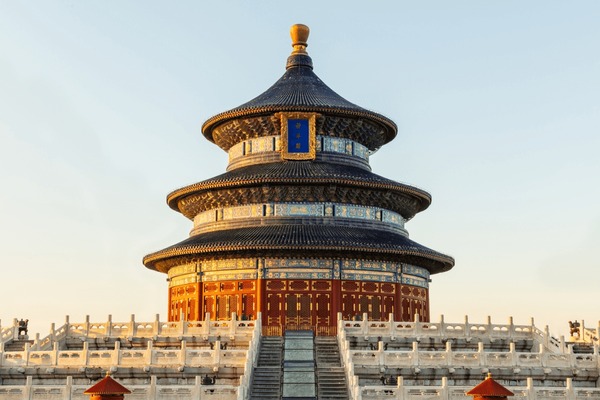Tianning Temple: Where History Meets Majestic Views – Discover Its Wonders!

An Essential Guide to Visiting Tianning Temple
Nestled in the heart of Changzhou, Tianning Temple (天宁寺) stands as a magnificent testament to China’s rich cultural heritage. What sets this temple apart is not only its serene ambiance but also its impressive pagoda, widely regarded as one of the tallest in the country. Rising majestically against the skyline, the pagoda offers panoramic views that are sure to take your breath away. With its vibrant colors and intricate architecture, Tianning Temple is a visual feast that beckons travelers from around the globe.
In this essential guide, you will discover everything you need to know for a memorable visit to Tianning Temple. We’ll explore its historical significance, provide practical tips on admission and accessibility, and highlight the best times to visit. Additionally, we’ll delve into the surrounding area, featuring nearby attractions and dining options to enhance your experience. Whether you’re a history buff, a photography enthusiast, or simply seeking tranquility, Tianning Temple promises a captivating journey into the heart of Chinese spirituality and artistry.
In This Guide
- An Essential Guide to Visiting Tianning Temple
- The Rich History and Legends of Tianning Temple
- Main Highlights: What You Absolutely Can’t Miss
- Planning Your Visit: A Practical Guide
- Tickets: Prices, Booking, and Tips
- How to Get There: A Complete Transportation Guide
- Local Cuisine and Accommodation Nearby
- Frequently Asked Questions
- Final Thoughts on Your Trip
The Rich History and Legends of Tianning Temple
A Glimpse into the Past
Tianning Temple, located in the heart of Changzhou, is not just a stunning architectural marvel; it is a testament to the rich tapestry of Chinese history and spirituality. The temple’s origins date back to the Tang Dynasty (618-907 AD), making it one of the oldest Buddhist sites in the region. Throughout centuries, it has undergone numerous renovations and expansions, each adding layers to its storied past.
The Tang Dynasty Foundation
The temple’s foundation was laid during the reign of Emperor Xuanzong of the Tang Dynasty. Initially known as the “Temple of Heavenly Peace”, it served as a vital center for the propagation of Buddhism. Scholars believe that the temple played a crucial role in the cultural exchanges between China and other Asian nations, attracting monks and travelers who sought spiritual guidance.
The Ming and Qing Dynasties
The temple flourished further during the Ming (1368-1644) and Qing (1644-1912) Dynasties. It became renowned not only for its religious significance but also as a cultural hub. Notable figures, such as poets and artists, visited the temple, leaving behind their works inspired by its serene environment. The Tianning Pagoda, built in the late Ming Dynasty, stands tall at 154 feet, making it one of the tallest pagodas in China. This architectural wonder became a symbol of the temple, admired for its intricate design and historical importance.
Legends and Lore
The legends surrounding Tianning Temple are as captivating as its history. One such tale recounts the story of a wandering monk who, after a long journey, sought refuge in the temple. As he meditated under a sacred tree, he experienced a divine vision that revealed the secrets of the universe. This story has made the tree a revered site for visitors, symbolizing enlightenment and inner peace.
Another legend speaks of a miraculous event where the temple’s bell, during a time of great drought, rang on its own, signaling the arrival of rain. Locals believe that this event was a sign of divine intervention, reinforcing the temple’s status as a sacred space where prayers are heard.
Modern-Day Significance
Today, Tianning Temple remains a vital spiritual center, drawing thousands of visitors each year, both for its stunning architecture and its tranquil atmosphere. The temple complex features numerous halls filled with statues of Buddha and bodhisattvas, each with its own unique story. The surrounding gardens, lush with trees and flowers, provide a peaceful retreat from the bustling city life, inviting visitors to reflect and find solace.
A Place of Exploration and Reflection
Visiting Tianning Temple is not merely about witnessing its architectural beauty; it is an invitation to delve into the depths of Chinese culture and spirituality. As you walk through the temple grounds, you can sense the echoes of history and the whispers of legends that have shaped this remarkable site. Whether you seek enlightenment, inspiration, or simply a moment of peace, Tianning Temple offers an experience rich with history and mystique, making it a must-visit destination in Changzhou.

Tianning Temple.
Main Highlights: What You Absolutely Can’t Miss
The Majestic Tianning Pagoda
Standing tall as one of the highest pagodas in China, the Tianning Pagoda is an architectural marvel that demands your attention. With its intricate designs and vibrant colors, it showcases the elegance of traditional Chinese architecture. Climb to the top for a breathtaking panoramic view of Changzhou, where the bustling city meets serene nature. Tip: Arrive early in the day to beat the crowds and enjoy the tranquility of the site.
Tranquil Temple Grounds
The temple grounds surrounding Tianning Pagoda offer a peaceful retreat from the city’s hustle and bustle. Lush trees and well-manicured gardens create a serene atmosphere, perfect for leisurely strolls or quiet reflection. Take a moment to appreciate the harmonious blend of nature and spirituality. Tip: Bring a camera to capture the stunning contrasts of colors throughout the seasons, especially during spring and autumn.
The Hall of Great Strength
As you explore the temple, don’t miss the Hall of Great Strength. This impressive structure houses numerous intricate Buddha statues and is richly adorned with traditional carvings. The hall not only serves as a place of worship but also as a testament to the craftsmanship of ancient artisans. Tip: Spend some time observing the details in the carvings; they tell stories of Buddhist mythology and teachings.
The Bodhi Tree
A visit to the Tianning Temple wouldn’t be complete without paying homage to the revered Bodhi Tree. This sacred tree is a symbol of enlightenment and is believed to be a descendant of the original tree under which Buddha attained enlightenment. Many visitors come here to meditate and reflect on their spiritual journeys. Tip: Bring a journal to jot down your thoughts and experiences while sitting in the peaceful surroundings of the tree.
The Ancient Steles
Scattered throughout the temple grounds, the ancient steles offer a glimpse into the history and culture of the region. These stone tablets are inscribed with historical texts and poems, providing insight into the temple’s significance over the centuries. Tip: Take a guided tour if available, as knowledgeable guides can share fascinating stories behind each stele.
The Meditation Hall
For those seeking a deeper spiritual experience, the Meditation Hall is a must-visit. This tranquil space is designed for quiet contemplation and meditation, allowing visitors to connect with their inner selves. The calm ambiance and simple decor foster a sense of peace that is both inviting and rejuvenating. Tip: Consider joining a meditation session if offered; it can be a transformative experience.
Local Shops and Cafés
After exploring the temple, take some time to visit the nearby shops and cafés. The area surrounding Tianning Temple is dotted with charming boutiques and eateries where you can sample local delicacies and pick up unique souvenirs. Tip: Try the traditional Chinese tea served at local cafés for a refreshing break after a day of exploration.
Visiting Tianning Temple is not just about seeing historical structures; it’s an immersive experience that invites you to connect with culture, spirituality, and the beautiful landscape of Changzhou. Don’t miss out on these highlights that embody the essence of this remarkable site!

Tianning Temple.
Planning Your Visit: A Practical Guide
Best Time to Visit
The optimal time to visit Tianning Temple is during the spring (March to May) and autumn (September to November) months when the weather is mild and the scenery is particularly vibrant. Spring brings blooming flowers and fresh greenery, while autumn showcases stunning foliage. Visiting early in the morning or late in the afternoon can provide a peaceful experience, avoiding the crowds while also capturing beautiful light for photography.
Recommended Itinerary
For a fulfilling visit to Tianning Temple, consider the following itinerary:
- Morning:
- Arrive at Tianning Temple early to enjoy the serene atmosphere.
-
Explore the temple grounds, taking time to appreciate the architecture and surrounding gardens.
-
Midday:
- Climb the pagoda for panoramic views of Changzhou. Each floor offers unique displays and a different perspective of the city.
-
Enjoy lunch at one of the nearby restaurants, such as Porcellino Italian Restaurant or Fu Ji Da Restaurant, which offer a variety of cuisines.
-
Afternoon:
- Visit the adjacent park for a leisurely stroll amid lush trees and tranquil paths.
-
Take time to explore local shops and grab some souvenirs.
-
Evening:
- If time allows, return to the temple to witness it illuminated at night, offering a completely different ambiance.
Photography Tips
- Golden Hour: Aim to take photos during the early morning or late afternoon when the sunlight casts a warm glow over the temple, enhancing the colors of the structures and gardens.
- Vantage Points: Climb the pagoda for sweeping views of the surrounding area. Capture the contrast between the modern city and the ancient architecture.
- Details Matter: Focus on intricate carvings, statues, and the beautiful flora surrounding the temple. Close-up shots can reveal the stunning craftsmanship.
- Respectful Composition: When photographing people, especially monks or worshippers, be discreet and respectful of their space and practices.
What to Wear
Dress comfortably and appropriately for a temple visit. Here are some recommendations:
- Footwear: Wear comfortable shoes as you will be walking and possibly climbing. Closed-toe shoes are recommended.
- Clothing: Lightweight, breathable fabrics are ideal, especially during the warmer months. Ensure your attire is modest; long pants and sleeved tops are preferable.
- Weather Considerations: Bring a hat and sunglasses in summer, or a light jacket in cooler months, as the temperature can change throughout the day.
Insider Tips
-
Admission Fees: The entrance fee for the temple is 20 RMB, which does not include the pagoda. Check for any potential discounts for students or groups.
-
Guided Tours: Consider joining a guided tour to gain deeper insights into the temple’s history and architecture. Many local tour operators offer packages that include Tianning Temple as part of a broader city tour.
-
Local Snacks: Don’t miss trying local snacks from vendors near the temple. The area is known for its delightful street food, which can enhance your cultural experience.
-
Cultural Sensitivity: Be mindful of the customs and practices observed at the temple. It is a place of worship, so maintain a respectful demeanor, and avoid loud conversations.
-
Explore Nearby Attractions: After visiting Tianning Temple, take some time to explore nearby attractions such as Hongmei Park and the Changzhou Museum, both within walking distance and offering a glimpse into the local culture and history.

Tianning Temple.
Tickets: Prices, Booking, and Tips
When planning your visit to Tianning Temple, it’s essential to know the ticket prices, what each ticket includes, and how to book your entrance in advance to ensure a smooth experience. Here’s a breakdown of the ticketing information:
| Ticket Type | Price (CNY) | Includes |
|---|---|---|
| General Admission | 20 | Access to the temple grounds |
| Pagoda Access | 30 | Access to the pagoda and temple grounds |
| Combined Ticket | 40 | Access to both the temple and the pagoda |
Booking Information
How to Book:
– On-Site Purchase: Tickets can be purchased directly at the entrance of Tianning Temple. However, during peak tourist seasons or weekends, the lines can be long.
– Online Booking: It is highly recommended to book your tickets in advance through official websites or trusted travel platforms. This not only saves time but also guarantees your entry, especially if you plan to visit during busy periods.
Tips for Visitors
- Advance Booking: To avoid disappointment, book your tickets online at least a few days in advance, particularly during holidays or major events.
- Best Time to Visit: Consider visiting in the early morning to enjoy a quieter experience and capture stunning photographs in soft light.
- Explore the Surroundings: Take time to explore the beautiful park surrounding the temple, which adds to the tranquil atmosphere.
With this information in hand, you’re all set to enjoy the serene beauty and rich history of Tianning Temple!
How to Get There: A Complete Transportation Guide
Accessing Tianning Temple: Your Transportation Guide
Visiting Tianning Temple (天宁寺) in Changzhou offers a glimpse into the rich cultural heritage of China. This stunning temple complex, featuring one of the tallest pagodas in the country, is easily accessible from various locations. Below is a comprehensive guide to help you navigate your way to this must-see attraction.
From the Nearest Major City: Shanghai
- By Train:
- Duration: Approximately 1.5 to 2 hours
- Cost: Ranges from 80 to 150 RMB depending on the train class.
- Details: Head to Shanghai Hongqiao Railway Station or Shanghai Railway Station. Purchase a ticket for a high-speed train (G or D trains) to Changzhou Station. Trains run frequently throughout the day.
-
From Changzhou Station: Take a taxi or rideshare (around 10-15 RMB) to Tianning Temple, which is located about 5 kilometers away.
-
By Bus:
- Duration: Approximately 2.5 to 3 hours
- Cost: About 50 to 70 RMB.
- Details: Buses depart from various long-distance bus stations in Shanghai, such as Shanghai South Bus Station. The journey may take longer due to traffic, so plan accordingly.
-
From Changzhou Bus Station: A short taxi ride (about 10 RMB) will take you to the temple.
-
By Car:
- Duration: Approximately 2 hours
- Details: If you prefer to drive, take the G2 Beijing-Shanghai Expressway. Follow signs towards Changzhou and then to the city center. Parking is available near the temple.
From Nanjing
- By Train:
- Duration: About 1 to 1.5 hours
- Cost: Ranges from 60 to 100 RMB.
- Details: Depart from Nanjing South Railway Station on a high-speed train to Changzhou Station.
-
From Changzhou Station: Take a taxi to Tianning Temple for about 10-15 RMB.
-
By Bus:
- Duration: Approximately 2 to 2.5 hours
- Cost: About 40 to 60 RMB.
- Details: Buses leave from Nanjing’s main bus terminals. Check schedules as they may vary.
-
From Changzhou Bus Station: A taxi ride (around 10 RMB) will take you to the temple.
-
By Car:
- Duration: About 1.5 hours
- Details: Drive via G25 and G2 expressways. Parking is available near the temple complex.
Getting Around the Scenic Area
Once you arrive at Tianning Temple, navigating the surrounding area is straightforward:
- Walking:
-
The temple grounds are pedestrian-friendly and can be explored on foot. The scenic area features beautiful gardens and pathways that invite leisurely strolls.
-
Bicycles:
-
Renting a bicycle is a popular option among visitors. Several rental shops are available nearby, allowing you to explore the surrounding parks and attractions at your own pace.
-
Taxis and Rideshare:
-
If you’re looking to visit nearby attractions, such as Hongmei Park or the Changzhou Shopping Center, taxis and rideshare options like Didi are readily available and affordable.
-
Public Transportation:
- Local buses also service the area, making it easy to hop on and off as you explore various sites. The bus system is efficient, though English signage may be limited.
Final Tips
- Best Time to Visit: Early morning or late afternoon for fewer crowds and pleasant temperatures.
- Admission Fee: The entrance to Tianning Temple is approximately 20 RMB, and additional fees apply for access to the pagoda.
- Accessibility: The temple is wheelchair accessible, but some areas may have uneven terrain.
With this guide, you’re all set to enjoy the wonder of Tianning Temple and its beautiful surroundings. Safe travels!

Tianning Temple.
Local Cuisine and Accommodation Nearby
Nestled in the heart of Changzhou, Tianning Temple (天宁寺) is not just a feast for the eyes with its stunning architecture and lush surroundings; it also offers travelers a chance to indulge in the local culinary delights and find suitable accommodations nearby.
Culinary Delights
When visiting Tianning Temple, make sure to explore the local cuisine. Here are a few must-try dishes that will give you a taste of Changzhou’s rich gastronomic heritage:
-
Noodle Soup (牛肉面): A comforting bowl of beef noodle soup features tender slices of beef paired with chewy noodles and aromatic broth. This dish is often garnished with green onions and served with pickled vegetables for an extra kick. It’s perfect for a cozy meal after exploring the temple grounds.
-
Changzhou Steamed Buns (常州小笼包): These delicate steamed buns are filled with a savory mixture of pork and broth. As you bite into them, you’ll enjoy a burst of flavor. They are typically served with a side of soy sauce and vinegar for dipping, making them a favorite snack among locals and visitors alike.
-
Sweet and Sour Mandarin Fish (糖醋桂鱼): This signature dish from Jiangsu province features a whole fish deep-fried until crispy and then coated in a vibrant sweet and sour sauce. The combination of flavors and textures makes this dish a local favorite that shouldn’t be missed.
-
Rice Wine (米酒): To accompany your meals, try a glass of local rice wine, which is known for its smoothness and subtle sweetness. It’s often enjoyed warm and pairs beautifully with the savory dishes of the region.
Accommodations Nearby
After a day of exploring, you’ll want a comfortable place to rest your head. Here are some accommodation options near Tianning Temple catering to various budgets:
-
Luxury Option: Changzhou Marriott Hotel
Located just a short drive from the temple, the Changzhou Marriott Hotel offers elegant rooms with modern amenities, a spa, and several dining options. With stunning views of the city and a fantastic location, it’s perfect for those seeking a lavish stay. -
Boutique Option: Jinling Jingyuan Hotel
This charming boutique hotel combines traditional Chinese aesthetics with modern comforts. Located close to the temple, it offers uniquely designed rooms and personalized service, making it an ideal choice for travelers looking for a more intimate experience. -
Budget Option: Changzhou Hanting Hotel
If you’re traveling on a budget, the Changzhou Hanting Hotel provides clean, comfortable accommodations at an affordable price. It’s conveniently located near public transportation, making it easy to explore the city.
Whether you’re indulging in local dishes or resting in cozy accommodations, your visit to Tianning Temple will be an unforgettable experience enriched by the flavors and comforts of Changzhou.

Tianning Temple.
Frequently Asked Questions
Frequently Asked Questions about Tianning Temple
-
Is Tianning Temple suitable for children and the elderly?
Yes, Tianning Temple is suitable for visitors of all ages. The temple grounds are spacious and have shaded areas, making it a comfortable visit for children and the elderly. However, be mindful of the pagoda’s stairs, as they may be challenging for those with mobility issues. -
Are there English signs and information available?
Yes, there are English signs throughout the temple grounds and pagoda, providing information about the history and significance of various structures. Additionally, some staff members can communicate in basic English, helping to enhance your experience. -
How much time should I plan to spend at Tianning Temple?
It is advisable to allocate at least 1 to 2 hours for your visit. This will give you enough time to explore the temple grounds, climb the pagoda for panoramic views, and appreciate the tranquil environment. -
What is the admission fee?
The admission fee for Tianning Temple is 20 RMB (approximately $3 USD), which allows access to the temple grounds. If you wish to climb the pagoda, there may be an additional fee, so be sure to check at the entrance. -
Are there food and drink options available nearby?
Yes, there are several restaurants and cafes in the vicinity of Tianning Temple. You can find a variety of dining options, from local Chinese cuisine to Italian fare, ensuring you have a pleasant meal after your visit. -
What should I wear during my visit?
It is recommended to wear comfortable clothing and shoes, especially if you plan on climbing the pagoda. As the temple is a religious site, modest attire is appreciated. Avoid overly revealing clothing and be respectful of the surroundings. -
Is it possible to take photographs inside the temple?
While photography is generally allowed throughout the temple grounds, certain areas may have restrictions, especially where worshippers are present. It’s best to be respectful and ask if you are unsure whether photography is permitted in specific areas. -
What is the best time to visit Tianning Temple?
The best time to visit Tianning Temple is during the spring (April to June) and autumn (September to November) when the weather is mild and the surrounding trees are in full bloom or displaying vibrant fall colors. Early mornings or late afternoons are ideal for fewer crowds and beautiful lighting for photographs.
Final Thoughts on Your Trip
Visiting Tianning Temple is more than just a sightseeing excursion; it’s a journey into the heart of Chinese culture, history, and spirituality. As you wander through the beautifully maintained grounds, surrounded by lush trees and vibrant colors, you’ll feel a sense of tranquility that invites reflection and appreciation. The impressive pagoda, heralded as one of the tallest in China, offers breathtaking views of Changzhou from its summit, rewarding your efforts with a panorama that encapsulates the harmony of nature and architecture.
Each corner of the temple complex reveals a story, from the intricate details of the Buddha statues to the serene ambiance that envelops the space. Whether you’re there to explore the historical significance, enjoy a peaceful moment of contemplation, or simply take in the beauty of your surroundings, Tianning Temple promises an enriching experience.
As you conclude your visit, carry with you the peacefulness and inspiration that this sacred place has to offer. Remember, every journey is a collection of moments; let Tianning Temple be one of those cherished memories that you hold dear. Embrace the beauty of travel, and may it continue to open your heart and mind to the wonders of the world.